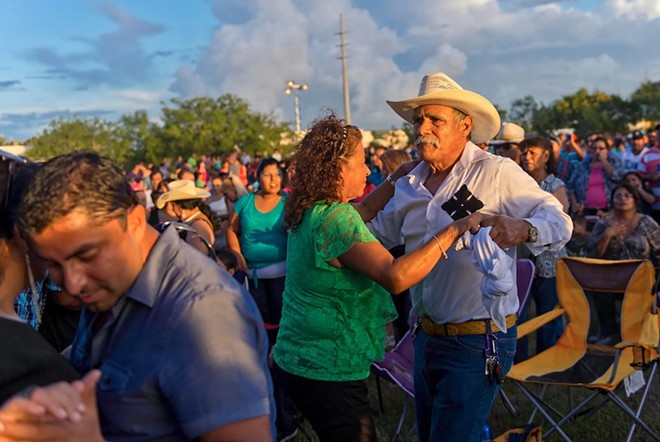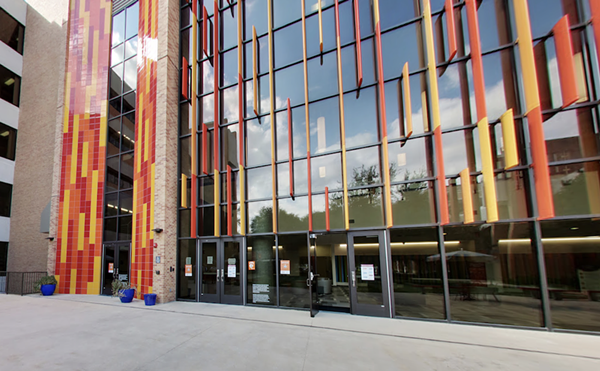
It seemed that long-awaited milestone was reached in 2021 when a closely watched data release last year was the first to reflect the culmination of decades of transformative growth.
But confirmation did not come until this week, when the U.S. Census Bureau updated its official population estimates. In new figures released Thursday, the bureau confirmed Latinos have made up the largest share of the state’s population since at least July 2022. The new population figures show Hispanic Texans made up 40.2% of the state’s population last summer, barely edging out non-Hispanic white Texans, who made up 39.8%.
The updated estimates retroactively captured a landmark moment in Texas’ demographic evolution, but it’s not much of a turning point. The new figures showing Latinos outnumbering white Texans by about 129,000 cap off a population boom that has been culturally recasting the state for several decades.
The state had a white majority from at least 1850 until 2004, when white people’s share of the state population dropped below 50%. People of color, Latinos in particular, have been powering the state's population gains for at least the last 20 years.
The state’s growth — usually close to evenly split between natural increase and net migration, including both domestic and international — has brought diversity to pockets of the state that were once nearly all white, transforming classrooms and workforces. Hispanic Texans are expected to make up a flat-out majority of the state’s population in the decades to come, and most Texas children will soon be Hispanic. Recent census estimates showed that 49.3% of Texans under the age of 18 are Hispanic. It’s been more than a decade since Hispanic students first came to make up a majority of Texas public school students.
The newly reached demographic milestone underscores the urgency with which the state must buy into its future, said Sharon Navarro, a political science professor at the University of Texas at San Antonio.“I think it speaks to the importance of state and local government to invest in their institutions and organizations that will train and equip Latinos with the skills that they need to obtain high-demand jobs, living wages, access to food, housing and other essentials that will allow them to participate in a robust economy and would also allow them to accumulate and pass on their wealth,” Navarro said.
But economic and political gains have not kept up with population growth. Hispanics living in Texas are disproportionately poor. Up against longstanding education disparities, they are less likely to have reached the higher levels of education that offer social mobility — and that are increasingly necessary to succeed in a flourishing Texas economy.
Hispanic Texans are more than twice as likely as white Texans to be living below the poverty level and less than half as likely to have graduated from college with bachelor’s degrees or higher. Recent estimates show 95% of white adults in Texas have at least a high school diploma, compared with only 70% of Hispanic adults. Hispanics are just as far back on income: The median income in 2021 was $81,384 for a white household but just $54,857 for a Hispanic household.
That these persistent disparities remain even as the state’s population has grown and transformed so significantly shows “the state of Latinos in Texas really hasn’t changed much” since the time of institutionalized discrimination, Navarro said.
“It also says the state is leaving out a significant portion of the population that can contribute in a number of ways in the political scape, the cultural scape and the economic scape,” Navarro said.
It should be noted that Texas is increasingly becoming a multicultural society in ways that make it harder to track its population through precise racial and ethnic categories. For example, the Census Bureau estimates the number of Texans who report more than one race is steadily increasing.
But in a state where opportunity and life outcomes so closely track with identity for Texans of color, policymakers say the new census estimates demand an emphasis on the state’s Latino growth.
“I remember as I was growing up hearing it’s going to be decades before we were the majority or before we were the largest group,” said state Rep. Victoria Neave Criado, a Dallas Democrat who chairs the Mexican American Legislative Caucus. “I think for me as a Latina legislator in a city and region that is thriving with Latino-owned businesses, it makes me proud. I think it also highlights the needs for changes in our policy.”
Texas is coming off a series of legislative sessions dominated by Republican-led initiatives that raised concerns among legislators like Neave Criado for their potential to harm Latinos. That included an effort to restrict how current events and the country’s history of racism can be taught in Texas schools. Republican lawmakers then redrew the state’s political maps in a manner that gave voters of color less say in who represents them in districts across the state.
More recently, the state Legislature banned diversity, equity and inclusion offices in public universities. Later this year, lawmakers are expected to take up a debate over public school funding.
The bureau’s estimates, Neave Criado said, capture the demographic reality she sees on the ground — and the need to make data-informed policy decisions.
“When you have individuals who have not walked in our shoes refusing to acknowledge that racism exists, that there have been historical barriers in our state, to me it’s a very coordinated attempt to hold onto their power for as long as possible and refusing to acknowledge that we are the state’s destiny,” Neave Criado said.
Disclosure: The University of Texas at San Antonio has been a financial supporter of The Texas Tribune, a nonprofit, nonpartisan news organization that is funded in part by donations from members, foundations and corporate sponsors. Financial supporters play no role in the Tribune's journalism. Find a complete list of them here.
Subscribe to SA Current newsletters.Follow us: Apple News | Google News | NewsBreak | Reddit | Instagram | Facebook | Twitter| Or sign up for our RSS Feed
















